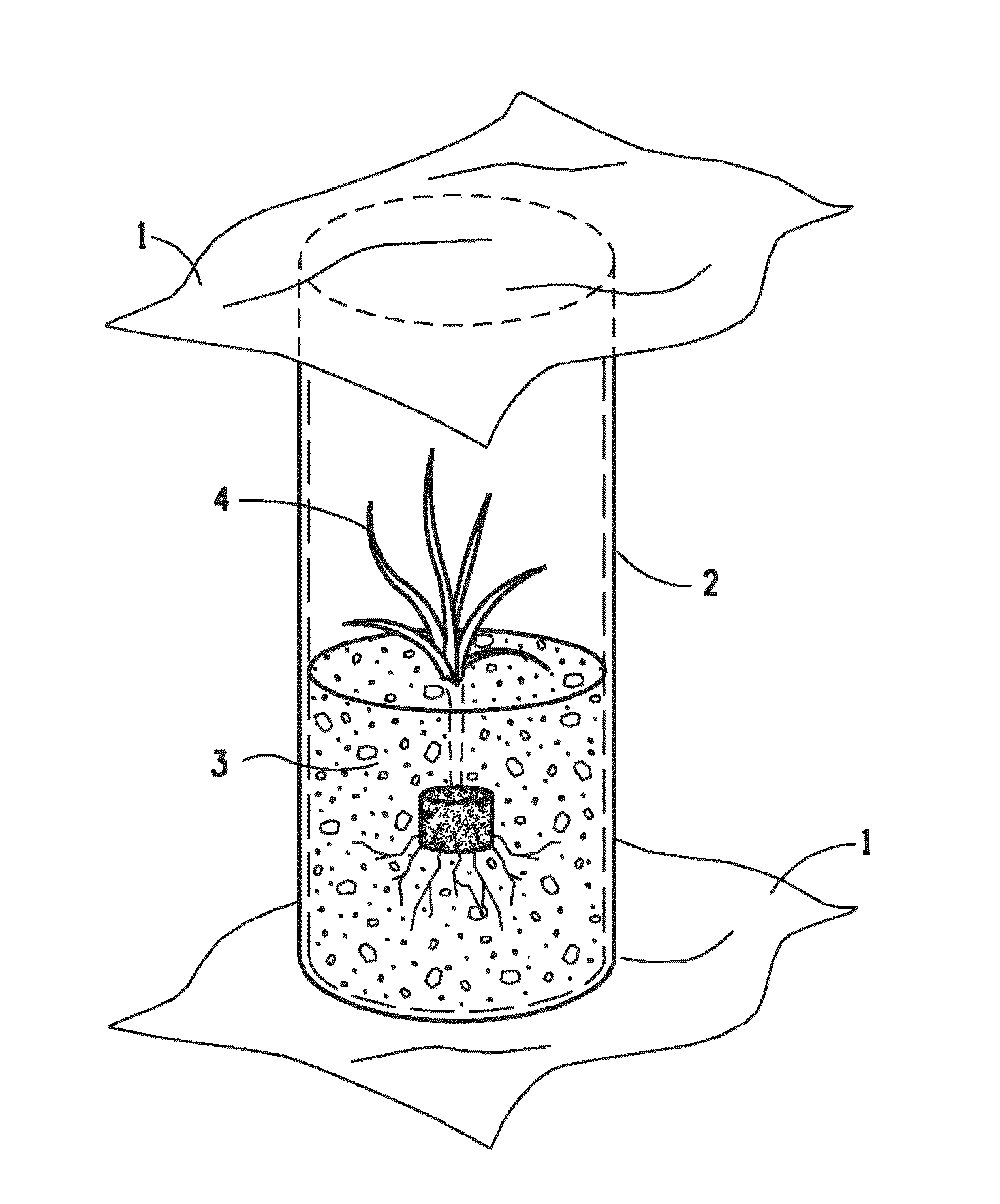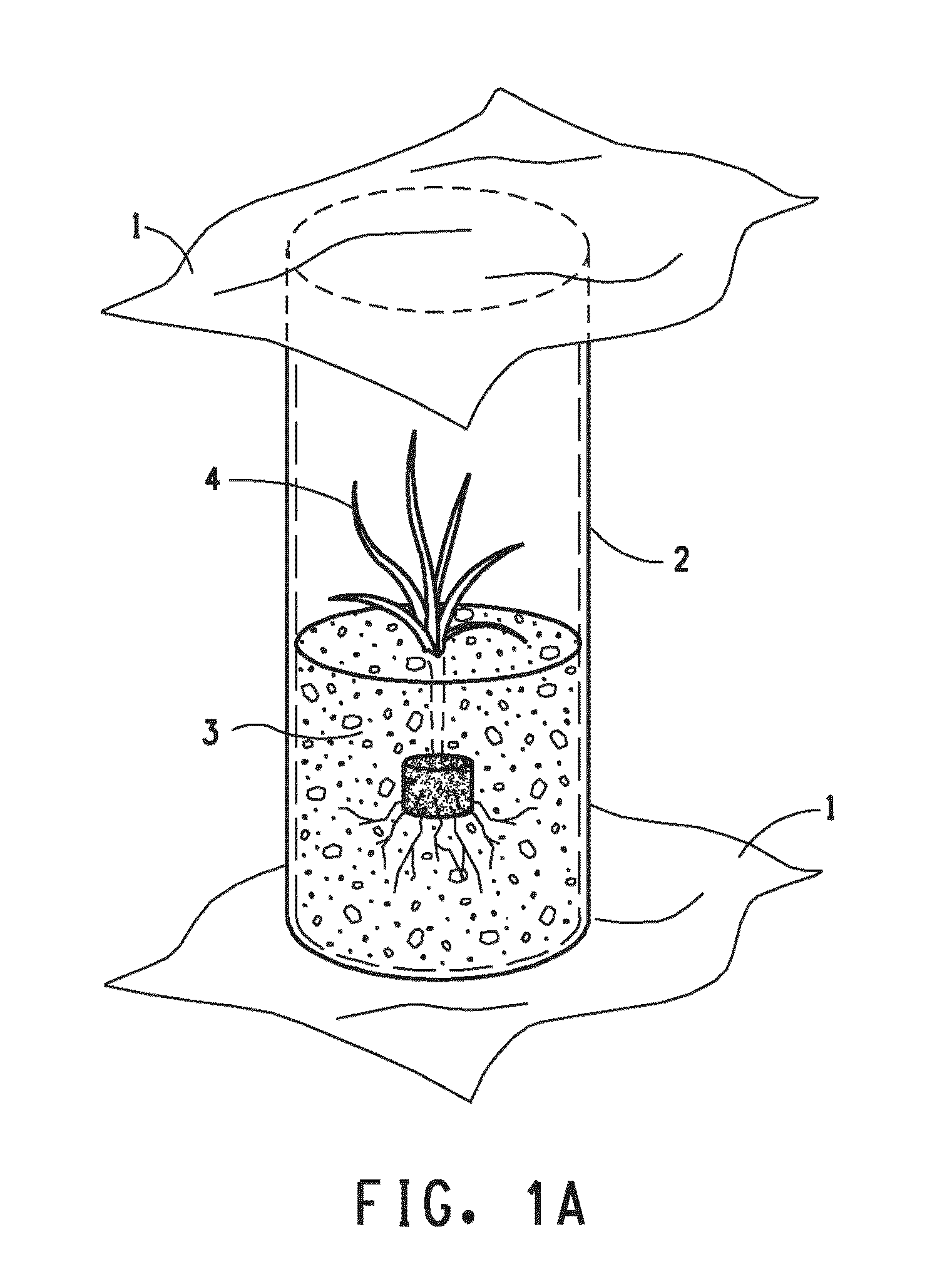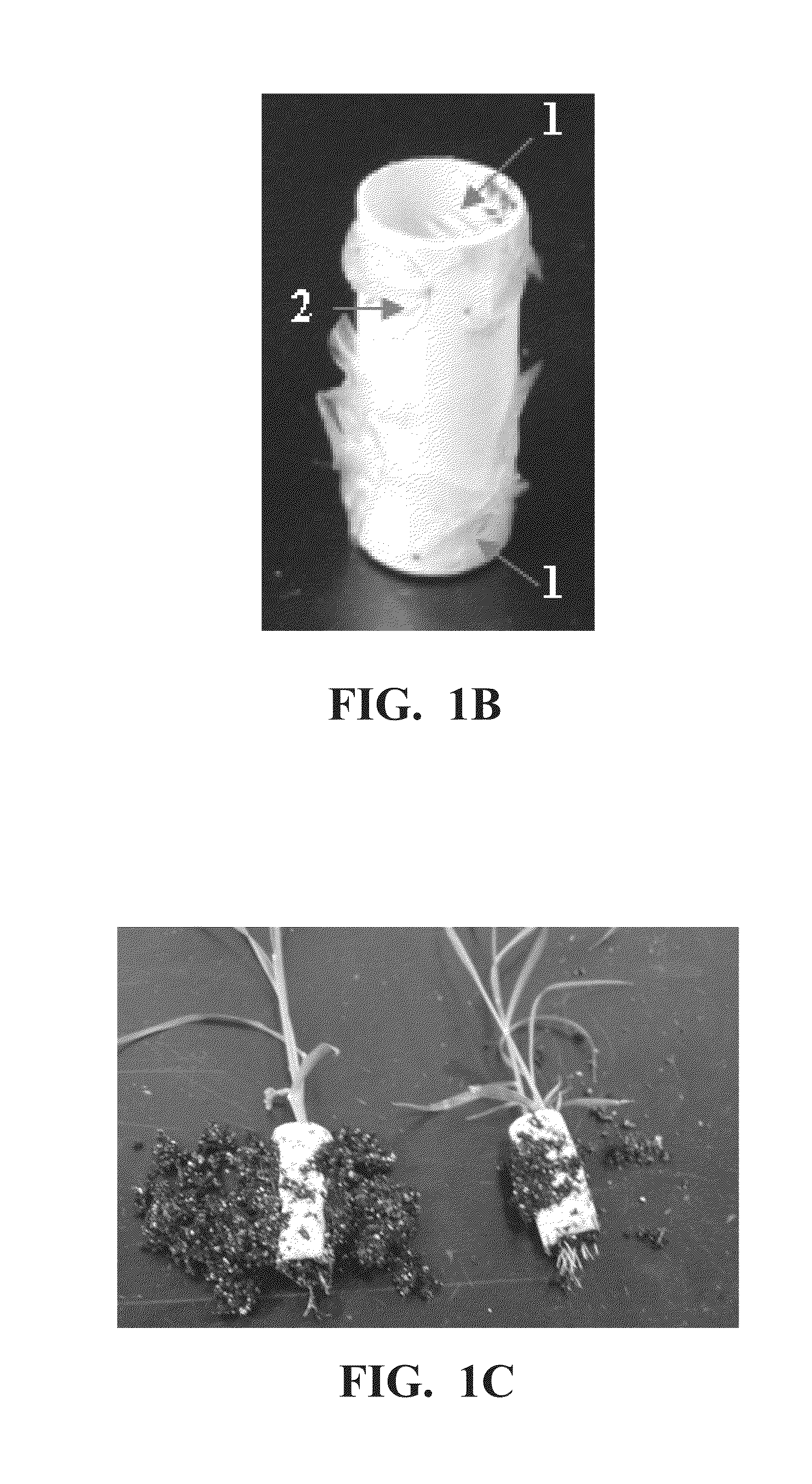Plant artificial seeds having multilayers and methods for the production thereof
a technology of plant artificial seeds and multilayers, applied in the field of plant artificial seeds, can solve the problems of poor growth and survival rate of plant natural seeds, low survival rate of field environments, and inability to propagate through seeds, so as to improve the growth and viability of regenerable plant tissues
- Summary
- Abstract
- Description
- Claims
- Application Information
AI Technical Summary
Benefits of technology
Problems solved by technology
Method used
Image
Examples
example 1
Sugarcane Artificial Seed—Architecture 1
[0274]The assembly process of making the artificial sugarcane seed was done in a non-sterile open lab bench environment. A wax paper cylinder was cut to 3 cm in length. One opening of the wax paper cylinder was secured by a piece of stretched gelatin-starch-glycerol film based on composition A. This secured opening served as the bottom opening of the cylinder. Metromix soil was then added to the cylinder till the cylinder was approximately ⅓rd full. The cylinder was tapped on the lab bench to pack the soil down. A 20 day sugarcane plantlet, prepared as described above, was trimmed both at the shoot and root apices and was placed in the Metromix. More Metromix was added again on top of the plantlet and tapped again to pack the soil such that the cylinder was ¾th full and the plantlet shoot tips were visible above the soil. The Metromix was moistened with approximately 400 microliters (μl) of water and then the top opening was secured with a pie...
example 2
Sugarcane Artificial Seed—Architecture 2
[0276]In addition to the moisture from the soil outside the artificial seed, the moisture of the soil inside the artificial seed caused some softening of the structure of the artificial seed. To prevent contact of the moisture from the Metromix inside the wax paper cylinder with the gelatin-starch-glycerol closure at the bottom opening, a second layer consisting of a paper disc was added to the closure for securing both the bottom and the top openings of the wax paper cylinder prior to securing the openings with gelatin-starch-glycerol films (FIG. 2a and FIG. 2b). In FIGS. 2a and 2b, (1) is the stretched gelatin-starch-glycerol film; (2) is the wax paper cylinder; (3) is the Metromix soil; (4) is the sugarcane plantlet and (5) is a paper disc layer added to the stretched gelatin-starch-glycerol film to secure the top and the bottom openings.
[0277]The assembly process of making the artificial seed according to this architecture was done in a no...
example 3
Sugarcane Artificial Seed—Architecture 3
[0279]To eliminate water loss from the bottom opening of the wax paper, a new architecture for the artificial seed was used. The wax paper cylinder was cut into 4 cm in length and placed vertically on an aluminum dish set on a hot plate at 35° C. The bottom opening of the cylinder was filled with approximately 7-10 drops of (or filled to a thickness of approximately 2-3 mm with) an aqueous solution of gelatin-starch-glycerol (Composition A). The filled cylinder was allowed to sit on the hot plate for 1 hour and then at room temperature overnight thus creating a film layer at the bottom opening of the cylinder. In the next step, approximately 10 drops of molten (33-34° C.) Crisco® (vegetable oil shortening) were added to the dried gelatin-starch-glycerol film at the bottom opening of the wax paper cylinder to form a crack free fat layer upon cooling to room temperature. The oil layer helped with water retention within the Metromix soil in the w...
PUM
 Login to View More
Login to View More Abstract
Description
Claims
Application Information
 Login to View More
Login to View More - R&D
- Intellectual Property
- Life Sciences
- Materials
- Tech Scout
- Unparalleled Data Quality
- Higher Quality Content
- 60% Fewer Hallucinations
Browse by: Latest US Patents, China's latest patents, Technical Efficacy Thesaurus, Application Domain, Technology Topic, Popular Technical Reports.
© 2025 PatSnap. All rights reserved.Legal|Privacy policy|Modern Slavery Act Transparency Statement|Sitemap|About US| Contact US: help@patsnap.com



